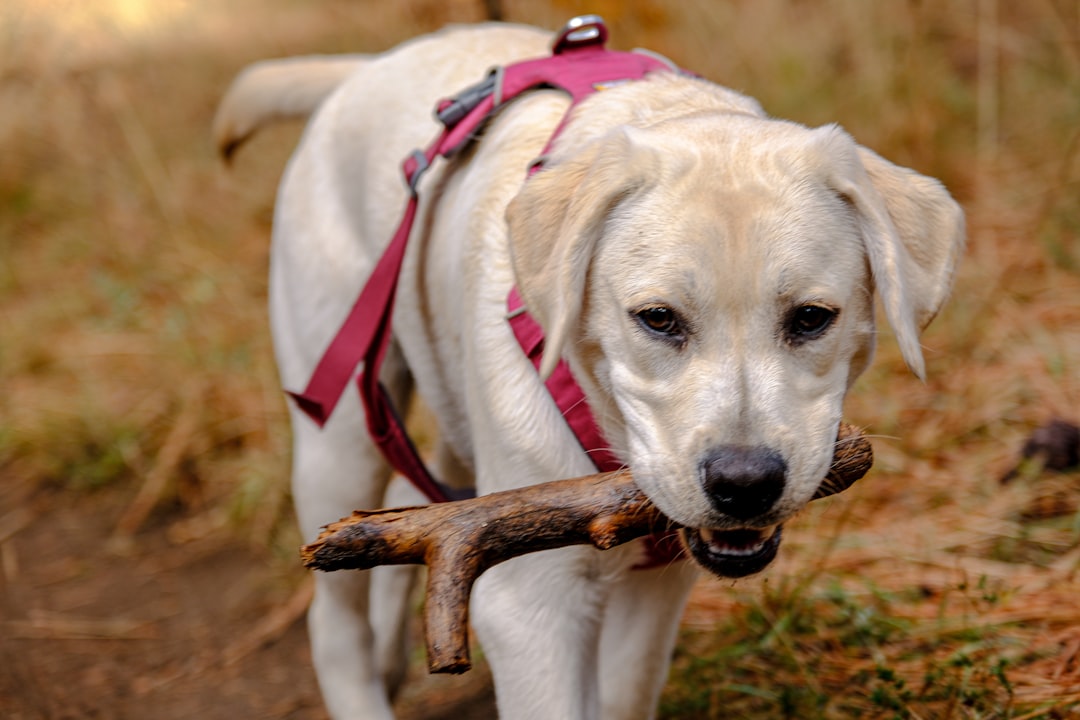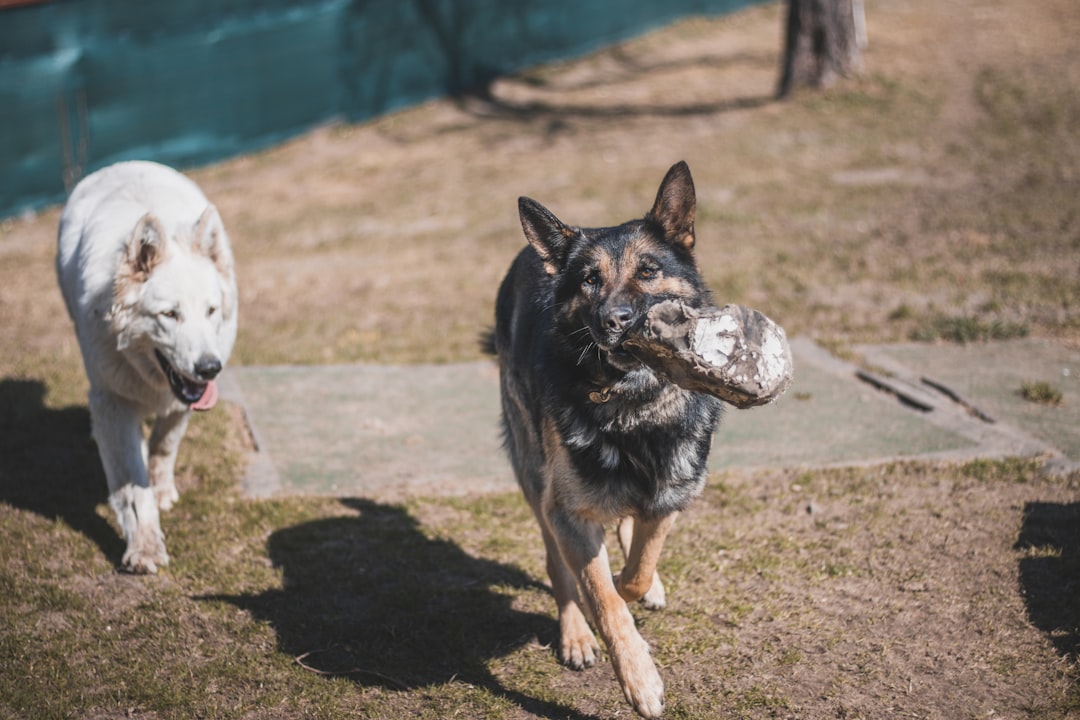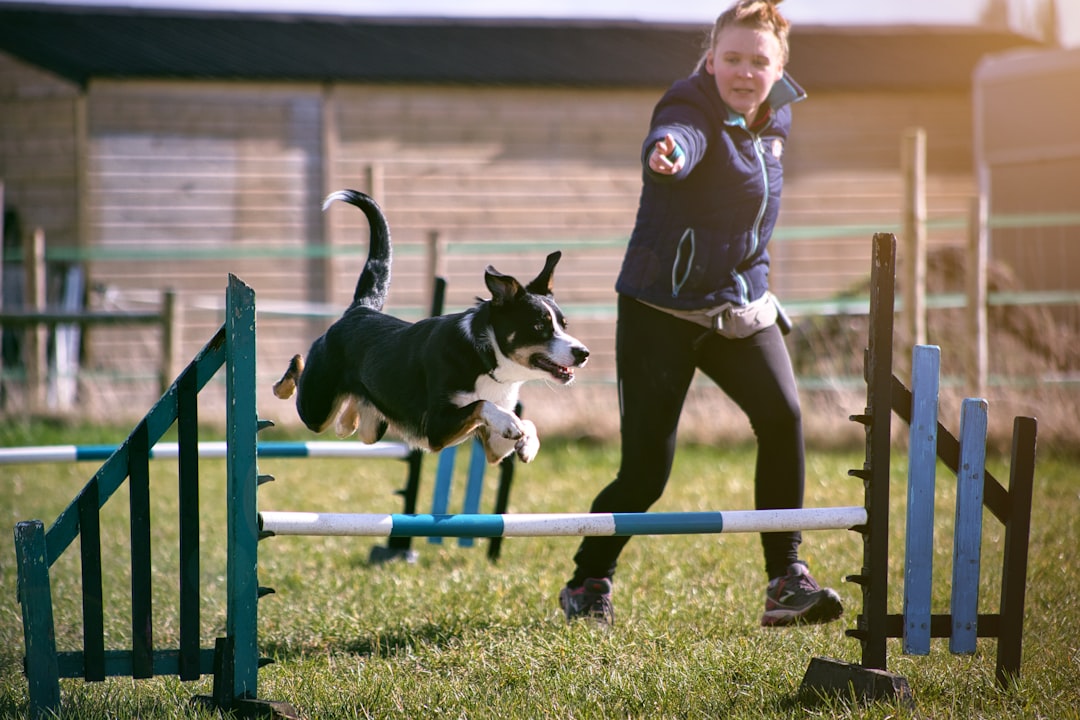

Engage prospects with a scan and streamline customer engagement with FREE QR code marketing tools by Sona – no strings attached!
Create a Free QR CodeFree consultation

No commitment

Engage prospects with a scan and streamline customer engagement with FREE QR code marketing tools by Sona – no strings attached!
Create a Free QR CodeFree consultation

No commitment
Dog training services are transforming rapidly as more owners seek professional solutions for everything from basic obedience to advanced behavior modification. Still, even the most skilled dog trainers face serious hurdles in connecting the dots between valuable in-person engagement, like at their training centers or local outreach events, and measurable digital outcomes like class sign-ups or collecting feedback. Without the right bridge, trainers risk missing those high-value prospects who interact offline but never make it into the CRM, ultimately causing lost opportunities and fragmented data.
Today, QR codes have emerged as an innovative way for dog training businesses to link real-world interactions to meaningful digital actions. By integrating QR codes into print materials, signage, and session handouts, trainers can guide prospective clients directly to online booking forms, digital reviews, or educational resources. This not only encourages timely conversions but also helps trainers identify and retarget anonymous or untracked prospects, solving the persistent problem of losing leads who do not immediately register or provide contact details. Learn the fundamentals of QR marketing.
This guide explores how QR technology can help dog training service operators drive more bookings, foster lasting client connections, and gain visibility into valuable engagement signals previously lost between offline and online experiences. Through real-world examples and best practices, learn to turn every scan into actionable business intelligence so each touchpoint is an opportunity to build a stronger, smarter operation. For more ideas by scenario, explore Sona QR’s use case library.

Dog training businesses often face a gap between a prospect's initial interest and actual enrollment, with many potential clients slipping through unnoticed due to manual sign-up sheets or generic print materials. Paper forms, clipboard lists, and brochure URLs ask too much of busy pet owners, especially when a curious scan could move them directly to a mobile booking form or quick pre-assessment questionnaire. QR codes now streamline this journey by providing a direct, trackable link from every in-person or print touchpoint to a conversion-focused online experience.
Replacing analog processes with QR-powered experiences leads to faster follow-ups and fewer missed opportunities. Consider the difference between a flyer that lists a long URL versus a flyer with a prominent QR code that opens a pre-populated registration form. The latter not only converts more efficiently, it also feeds data into your CRM in real time. Trainers tackling low conversion rates can apply these strategies:
By integrating QR codes into your client flow, trainers transform everyday interactions into measurable actions. Every flyer, handout, and community sign can become a conversion channel that captures interest at the moment it arises and routes it to the right next step.

Dog training depends on trust, quick responses, and personal reputation. Yet many trainers lose the chance to engage pet owners in the critical moments when they research services but hesitate to reach out. Owners often collect multiple brochures, snap photos of business cards, or promise themselves they will look up a website later. Too frequently, later never comes. QR codes address these persistent challenges by making it easy for potential clients to act on in-person curiosity, and for trainers to identify interest signals that usually stay hidden.
The magic of QR codes lies in their simplicity and speed. A clear code on a class schedule or a crate-training tip sheet can move a hesitant pet parent from passive browsing to active engagement. Trainers benefit because every scan is both an action and a datapoint. It reveals where the prospect came from, what content piqued their interest, and how ready they might be to enroll. Consider these advantages tailored to common dog training materials:
By acting as a two-way bridge, QR codes enable trainers to move beyond static marketing. They turn every offline interaction into a measurable step in a connected client journey.

The variety of QR code formats lets trainers match digital touchpoints with real-world engagement, ensuring no interested prospect is left behind due to limited or outdated data. Not every use case needs the same destination or functionality. Selecting the right format ensures the scan leads to the action you want, whether that is a booked consultation, a saved contact, or a submitted review.
For most dog training businesses, the following formats deliver the strongest results because they align closely with common client actions before and after sessions:
With Sona QR, you can generate and manage any of these formats in one place. Dynamic QR capabilities help trainers surface up-to-date engagement metrics, update destinations without reprinting, and close the loop on previously anonymous interest.

Growth for dog training providers often hinges on uncovering interest in less obvious offline settings and then nurturing those signals digitally. Without smart integration, handwritten sign-up sheets, generic flyers, and passive brochures can lead to missed leads and outdated account data. Strategic QR code usage reverses this trend by making every physical asset a bridge to a digital action.
When choosing placements, think about where pet owners spend time and the decisions they make in those moments. Aim to be present with a helpful, specific call to action. The following locations and materials often yield outsized returns:
Dog trainers who map QR placements to key decision points capture demand that previously remained invisible. Your goal is simple: be one scan away from the next step you want the prospect to take.

Practical QR use cases solve concrete marketing and operational pain points faced by trainers. They reduce friction for busy pet owners and feed clean data to your scheduling and CRM tools. When executed well, these use cases lift conversions and strengthen your reputation through timely, authentic proof of value.
Below are three high-performing applications that align with common client interactions in dog training services:
Each use case demonstrates how QR technology can surface actionable data and nurture leads who might otherwise remain anonymous. Over time, these touchpoints create a virtuous cycle of trust, engagement, and measurable growth.
Every scan gives dog training operators a window into a prospect’s mindset and readiness to act. Without a system, that intent can vanish as soon as the person leaves the facility or throws away a flyer. Modern QR and CRM integrations allow trainers to build segmented audiences based on genuine engagement signals rather than guesswork, which makes remarketing both efficient and respectful.
Segmentation begins with deliberate mapping of QR codes to stages in the client journey. This allows you to tailor messaging and offers based on what each person scanned and when they scanned it. Use these strategies to transform scans into high-value audiences:
When used intentionally, every QR scan becomes a path to stronger retargeting outcomes and sustained revenue growth. You will spend less on cold audiences and more on nurturing the people who have already raised their hand.
Dog training businesses often struggle to connect offline marketing with digital follow-up. A family picks up a brochure, watches a short training demo at a community event, or chats with a trainer at a pet store, then disappears without booking. By embedding QR codes across all physical and digital touchpoints, trainers can capture these micro-moments and move clients into clear next steps, such as scheduling, downloading a training plan, or joining a waitlist.
QR codes also unify your data across channels that were once difficult to measure. Instead of guessing which flyers or events drove leads, you can see scan patterns by location, time, and content. This clarity helps you allocate budget to the placements and messages that truly work. Here are five places where QR codes can enhance your broader marketing strategy:
Cross-channel QR integration builds a seamless flow from initial discovery through conversion and into retention. It unlocks actionable insights at every step while making life easier for busy pet owners who want simple, immediate options.
Launching a high-performing QR initiative in a dog training business requires clarity on goals, smart design, and consistent measurement. Treat your QR program like a living campaign that evolves based on data, not a one-off experiment. When each step is intentional, your materials become a connected funnel that guides pet parents from scan to schedule.
Use the following checklist as a blueprint. It replaces guesswork with a simple, repeatable process that turns offline curiosity into measurable outcomes and stronger client relationships.
By following this checklist, you replace missed connections and outdated outreach with a cycle of visible, testable growth. Scans become signals, signals become segments, and segments become bookings and reviews you can measure.
Dog training providers who rely solely on print or basic analytics frequently lack visibility into the true path prospects take from initial interest to revenue. A stack of event flyers might be gone at the end of the day, but without QR instrumentation you will never know who engaged or what they did next. QR-driven analytics provide full-funnel attribution, which makes it possible to connect offline engagement to real business outcomes and improve spend allocation.
Knowing someone scanned a code is useful, but the real impact comes from tying that scan to a form fill, a booked class, or a review. Integrated platforms like Sona QR and Sona make this possible by capturing scan metadata and unifying it with downstream actions. Here is how the data translates into decisions you can trust:
With advanced analytics, trainers gain unprecedented clarity. Each scan becomes a stepping stone that proves which messages and channels drive bookings, payments, and reviews.
Scaling QR results in dog training is about consistency and clarity. Once you have a baseline campaign running, refine your placements, messaging, and follow-up patterns to heighten impact. The goal is to make scanning feel like the obvious next step for the pet owner, not an extra chore.
Invest in staff education and simple, compelling CTAs. When trainers and front desk teams know why the codes exist and can explain what clients will get by scanning, engagement rises. The following best practices map closely to the physical media and workflows common in dog training:
Start creating QR codes for free: Start creating QR codes for free. Build your initial placements, and start measuring which surfaces truly move pet owners to act.
In practice, dog trainers are already closing the gap between offline and online engagement with QR codes. While every market and audience is different, the core behaviors are consistent. Make it easy to take action, deliver immediate value, and follow up quickly. The following examples illustrate how QR initiatives improve both client experience and business outcomes.
Use these stories as templates for your own programs. Adapt the placements and CTAs to your brand voice, your classes, and the environments where your prospects spend time.
These results show how technology can turn physical interactions into measurable business improvements. The unifying factor is clarity of next step and a frictionless scan-to-action experience.
Even the best QR strategy can stumble without clear CTAs, mobile-optimized destinations, and a trained staff that champions scanning. Small improvements in design and deployment often yield big gains in conversion. Equally important is avoiding the pitfalls that undermine trust or discourage engagement.
Use the following expert guidance to maximize ROI while safeguarding client experience and data:
QR codes have fast become a vital part of a modern dog training service’s toolkit, bridging the offline and online worlds to prevent missed prospects, surface anonymous engagement, and track the full journey from curiosity to committed client. When you tie each scan to actionable data and personalized follow-up, you address persistent weaknesses in attribution, buyer identification, and post-session relationship building.
As the industry evolves, businesses that leverage QR technology become more competitive, more visible, and better able to deliver data-driven experiences that feel personal and timely. By adopting best practices for QR integration and managing your campaigns with a centralized platform like Sona QR and Sona.com, you position your training operation to turn every class sign-up, flyer scan, or post-training review into a catalyst for sustainable growth and lifelong client loyalty.
QR codes have transformed dog training services from traditional methods into dynamic, measurable growth opportunities. Whether it’s attracting new clients, enhancing training session engagement, or providing instant access to instructional content, QR codes streamline interactions and capture real-time data to turn every touchpoint into a powerful conversion tool. Imagine knowing exactly which flyers, posters, or training handouts lead to booked sessions—and being able to optimize your marketing instantly.
With Sona QR, you can create dynamic, trackable QR codes in seconds, update campaigns without reprinting materials, and connect every scan directly to client bookings and revenue. No missed leads, no guesswork—just smarter, more effective dog training service promotions. Start for free with Sona QR today and transform every scan into a loyal client and successful training outcome.
Using QR codes on print materials, signage, and handouts to link offline interactions directly to online booking forms, reviews, and resources is a highly effective technique to increase engagement and conversions.
Look for dog training services that integrate QR codes into their marketing materials and client interactions, enabling seamless booking, feedback collection, and personalized follow-ups, which indicate a modern and customer-focused approach.
The article does not specify the cost of dog training services.
Benefits include bridging offline and online engagement, reducing missed leads, enabling frictionless client experiences, providing dynamic content updates, tracking and attributing marketing efforts, improving conversion rates, and supporting personalized client follow-up.
Common services include basic obedience, puppy socialization, behavior modification, and advanced workshops, while QR code formats include web links to schedules or videos, vCards for contact saving, SMS or email initiation, and form links for registrations or feedback.
QR codes replace manual sign-up methods by providing direct, mobile-friendly links to booking and feedback forms, enabling faster follow-ups, reducing drop-off, and capturing real-time data that feeds into CRM systems for better lead management.
Effective placements include classroom and facility signage, event flyers, packaging and collateral like treat bags, direct mail postcards, and partnership signs at vet clinics or pet stores.
Use cases include event flyer class registrations, post-session digital review requests, and upsell offers for behavior modification packages, all of which help convert interest into measurable actions.
By assigning unique QR codes to different customer journey stages, tagging scans by service interest and location, integrating scan data with CRMs, and triggering personalized email or SMS follow-ups, trainers can create segmented audiences for efficient retargeting.
They should choose a clear use case tied to business goals, select the right QR code type (dynamic preferred), design and test codes for usability, deploy them across high-impact channels, and track and optimize performance continuously.
By capturing scan metadata such as time, location, and device, attributing scans to specific campaigns, syncing data with CRM platforms, and analyzing conversion paths to optimize marketing spend and improve ROI.
Use unique codes per asset, add clear CTAs, place codes in high-visibility and intent-driven locations, link to mobile-optimized destinations, educate staff to promote scanning, and ensure compliance and transparency in data usage.
Examples include Bark Smart Dog Training increasing review submissions via QR codes on handouts, puppy starter kits with QR onboarding hubs doubling virtual class completions, and franchise events capturing leads through dynamic QR codes tagged by location and date.
Use Sona QR's trackable codes to improve customer acquisition and engagement today.
Create Your FREE Trackable QR Code in SecondsJoin results-focused teams combining Sona Platform automation with advanced Google Ads strategies to scale lead generation

Connect your existing CRM

Free Account Enrichment

No setup fees
No commitment required

Free consultation

Get a custom Google Ads roadmap for your business






Launch campaigns that generate qualified leads in 30 days or less.
